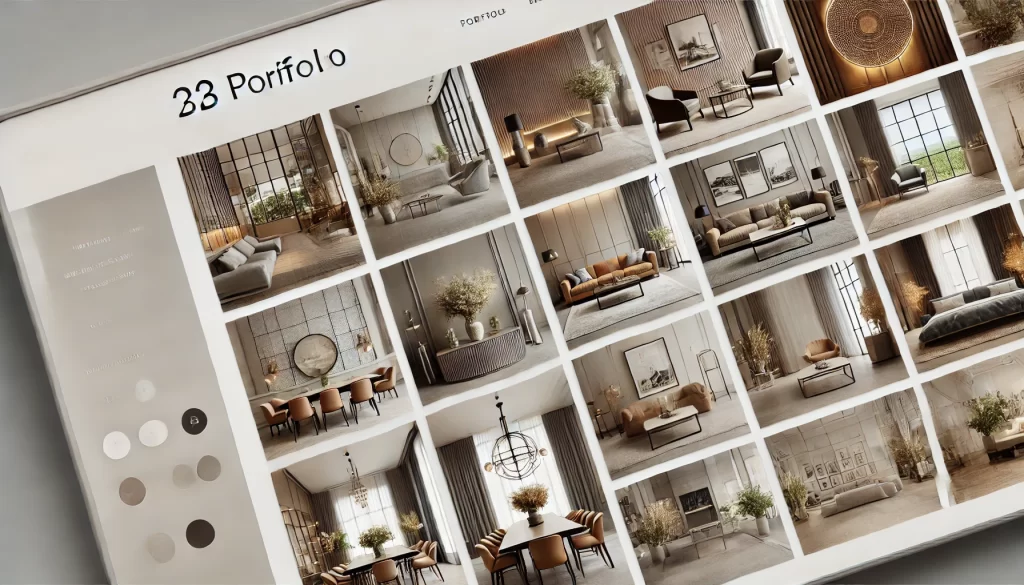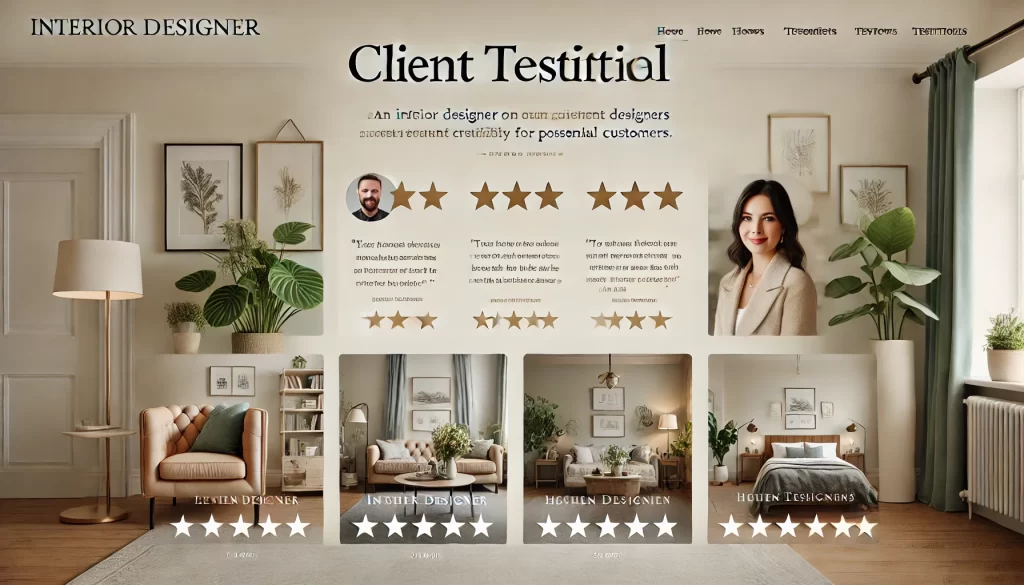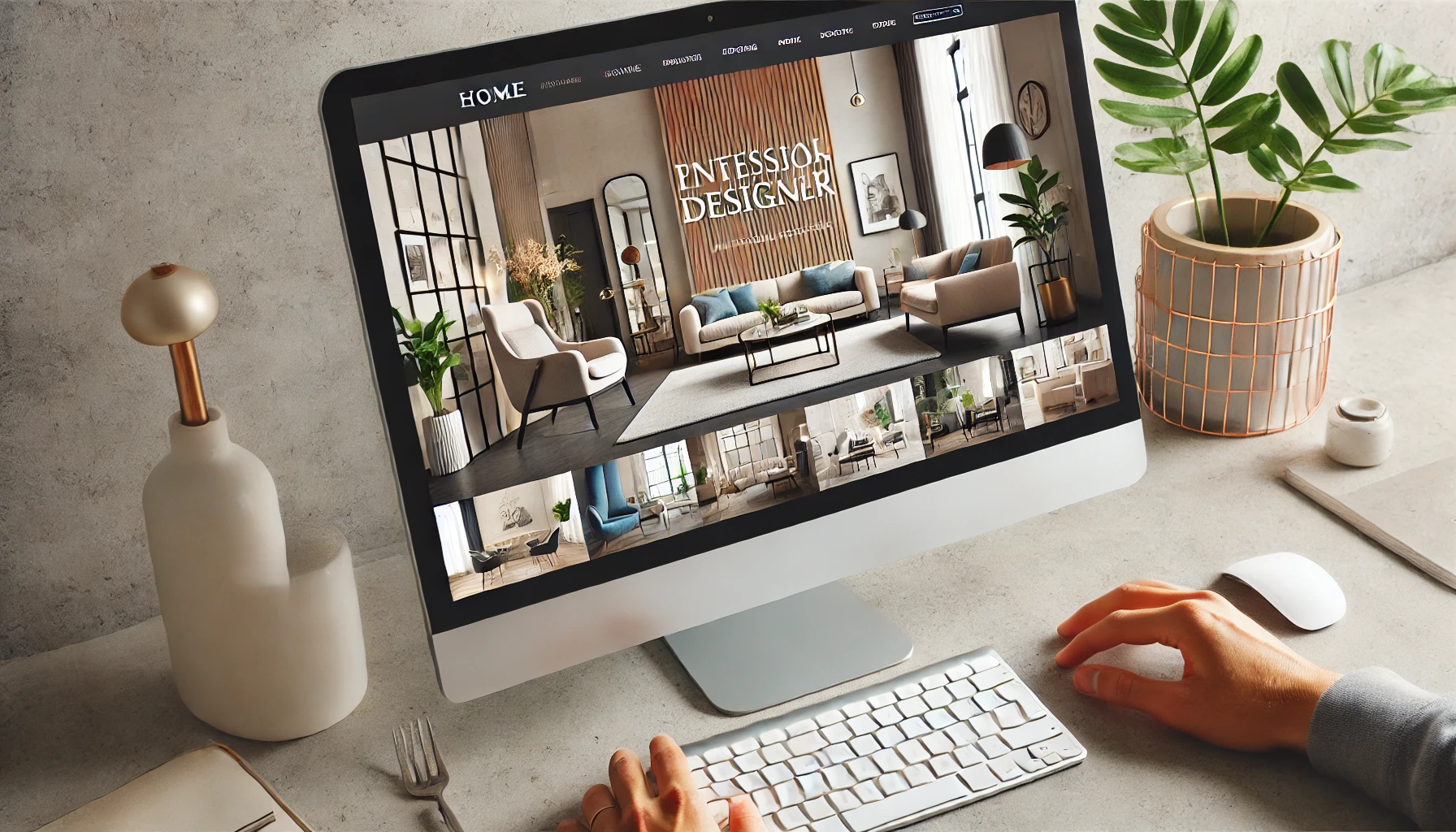Creating an Effective Interior Design Website
In today’s digital world, having an effective website is essential for interior designers looking to showcase their talents and attract new clients. Your website serves as a dynamic portfolio and a marketing tool that can help potential clients understand your design philosophy, visualize your skills, and ultimately hire you for their next project. But what makes an interior design website truly effective? This guide will walk you through the key elements that contribute to an interior design website’s success. From design aesthetics to user experience, we’ll cover the most important factors that help elevate your website, showcase your skills, and attract potential clients.

Suggested Posts:
- Creating an Effective Interior Design Website
- Design Home Interior for Style and Functionality
- Interior Design Guide for Industries’ Online Presence
The Importance of an Effective Website for Interior Designers
An interior design website is much more than just a digital portfolio, it’s your online identity and a crucial tool for growing your business. In a competitive industry, your website is often the first impression clients have of your work, so it must reflect your style, professionalism, and expertise.
Establishing Credibility and Trust
When potential clients visit your website, they’re not just looking for pretty pictures; they’re assessing whether they can trust you to handle their project. A well-designed, professional website conveys reliability and expertise, which builds credibility from the outset.
Showcasing Your Skills and Portfolio
A website gives you the perfect platform to showcase your portfolio and highlight the range of skills you offer. Clients want to see the work you’ve done whether that’s residential, commercial, or specialty projects and a visually compelling website allows you to do this in a way that reflects your unique style.
Attracting New Clients
In a digital age, most clients search for services online, and a strong online presence is essential to getting discovered. Your website not only helps you connect with your target audience but also serves as a lead-generation tool, turning passive visitors into active clients.

Key Elements of an Effective Interior Design Website
To build an effective website for interior designers, certain elements must be prioritized to ensure the site is functional, visually appealing, and optimized for attracting clients.
User Experience and Navigation Design
The user experience (UX) of your website directly impacts how visitors perceive your brand. An intuitive, well-organized navigation design makes it easy for users to find the information they need, such as your services, portfolio, or contact details. Streamlining the navigation reduces bounce rates and keeps visitors engaged with your content.
Make sure your website’s design is simple yet elegant, with clear menus, easy-to-read fonts, and visually engaging elements that don’t overwhelm the user.
Portfolio Showcase – A Visual Representation of Your Work
Your portfolio is one of the most important sections of your website, as it represents your skills, creativity, and experience. Organize it into categories that reflect different types of projects (e.g., residential, commercial, office spaces). For each project, provide high-quality images, a brief description, and details on the design process. Highlight your unique approach and design philosophy to connect with potential clients on a deeper level.
Use image galleries that allow for easy browsing, and ensure your images are optimized for fast loading without sacrificing quality. High-quality images demonstrate your attention to detail and ability to create beautiful spaces.
Suggested Posts:
- Designing Interior Spaces for Tattoo Shops and Clinics
- How to Build a Strong Portfolio to Attract Clients
- Creating an Effective Interior Design Website
Responsive Design for All Devices
In the era of mobile-first browsing, responsive design is no longer optional. A responsive website automatically adjusts its layout and design to fit different screen sizes, from desktops to smartphones. A website that looks great and works seamlessly on mobile devices is crucial for ensuring that you don’t lose potential clients who prefer to browse from their phones or tablets.
Building a Strong Online Presence through Your Interior Design Website
Your website is a vital part of your online presence, but there are additional steps you can take to make sure it helps you grow your brand and attract clients.
Search Engine Optimization (SEO) for Interior Designers
To ensure your website ranks well on search engines, it’s crucial to optimize your site with relevant keywords, such as “interior design website” and “website design for interior designers”. SEO helps you appear in search results when potential clients are looking for interior designers, thus driving organic traffic to your site.
Use a content management system (CMS) like WordPress to easily manage your website’s content and integrate SEO plugins to enhance your rankings. Pay attention to meta descriptions, image alt text, and title tags, all of which contribute to your SEO efforts.
Incorporating Client Reviews and Testimonials
Client testimonials are one of the most effective ways to build trust and demonstrate your credibility. Feature positive feedback prominently on your website to showcase your successful projects and satisfied clients. Testimonials provide social proof that you deliver high-quality work and customer service.
Ask clients for feedback after completing a project and use their quotes on your site. This not only builds trust but also helps you stand out in a crowded market.
Online Booking and Contact Forms
Make it as easy as possible for potential clients to contact you. Incorporating an online booking system or simple contact forms on your website makes it easy for visitors to inquire about your services or schedule consultations. Online booking systems can also help you manage your schedule and streamline communication.
Additional Tips for Creating an Inspiring Interior Design Website
Incorporating Design Inspiration and Blogs
A blog section on your website can showcase your expertise in interior design while offering value to your visitors. Post articles about the latest design trends, tips on home decoration, or advice on optimizing small spaces. This not only helps attract traffic to your site but also establishes you as an authority in your field.
Incorporating design inspiration boards or curated galleries can also engage visitors and give them ideas for their own spaces. Sharing your design ideas fosters a deeper connection with your audience.
Branding Through Consistent Design Elements
Your website’s design should reflect your brand. Use consistent colors, fonts, and imagery that align with your interior design style. Whether you prefer minimalist, contemporary, or luxurious designs, ensure that your website’s aesthetic mirrors your approach to interior design. Consistency in design elements across your website helps reinforce your brand and creates a cohesive experience for visitors.
Key Takeaways
- A professional, well-designed website is crucial for attracting clients and showcasing your skills as an interior designer.
- Ensure your website has a user-friendly design, easy navigation, and a visually appealing portfolio to demonstrate your expertise.
- Optimize your website for search engines and make it mobile-responsive to attract a wider audience.
- Incorporate client reviews, online booking, and contact forms to increase client engagement and facilitate communication.
FAQs
What should be included in an interior designer’s website?
An interior designer’s website should include a portfolio, client testimonials, an easy-to-navigate layout, a blog or design inspiration section, and clear contact details or an online booking system.
How do I optimize my interior design website for search engines?
To optimize your website, use relevant keywords, optimize images, include meta descriptions, and create high-quality content. Ensure your site is mobile-friendly and loads quickly.
Why is responsive design important for interior designers?
Responsive design ensures that your website looks great on all devices, from desktops to smartphones, providing a seamless experience for potential clients and improving user engagement.
